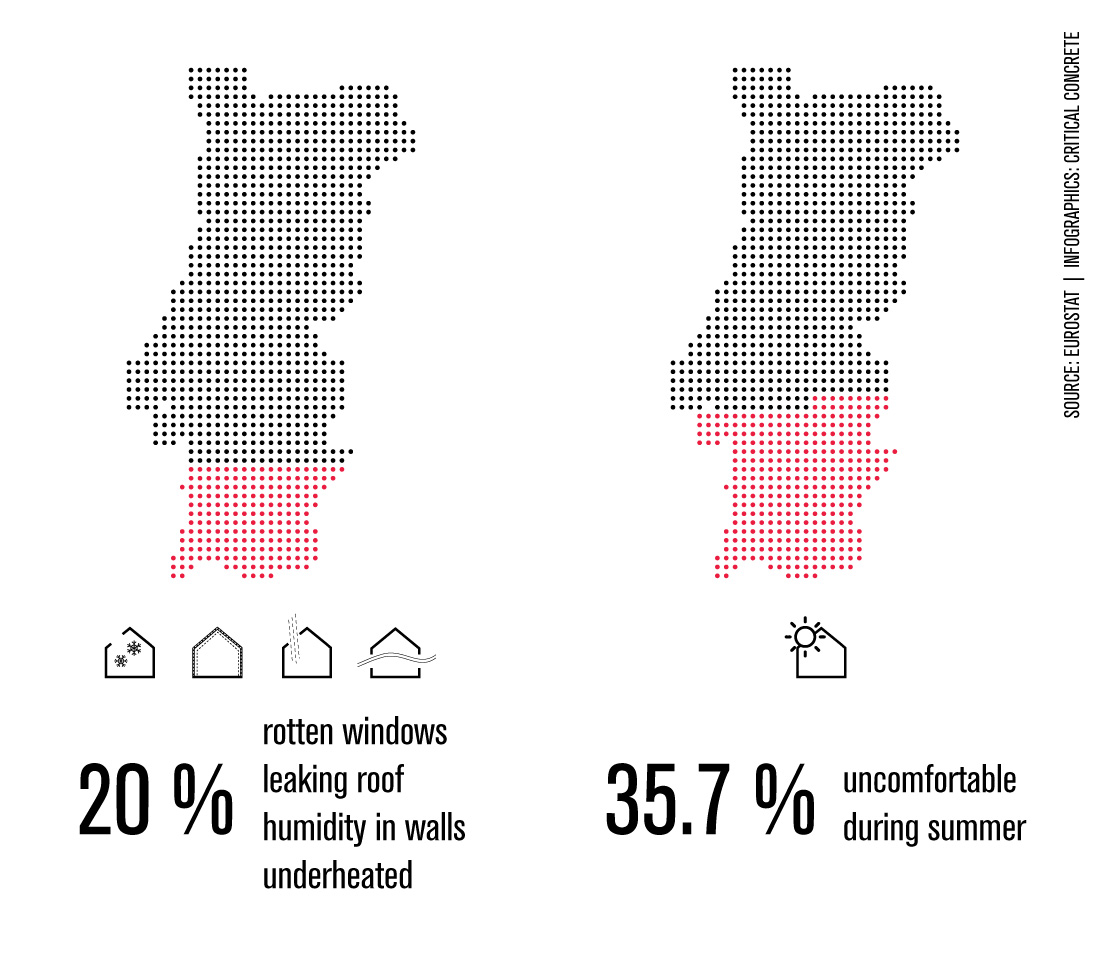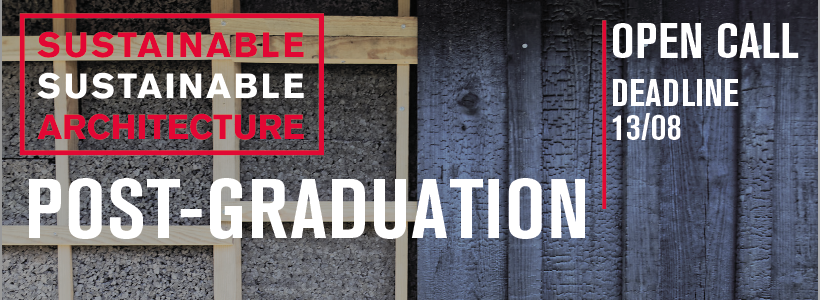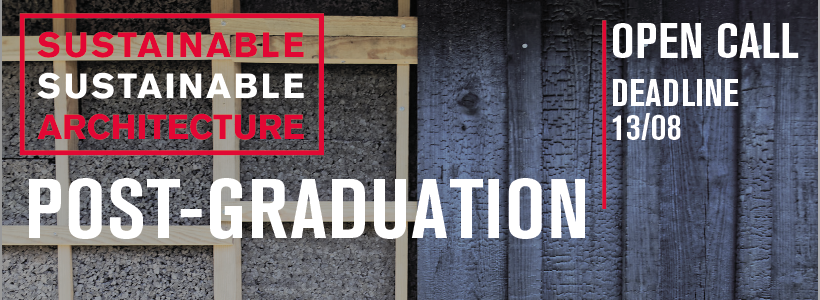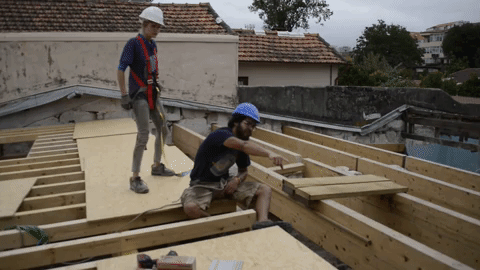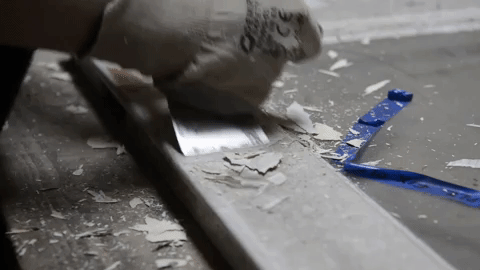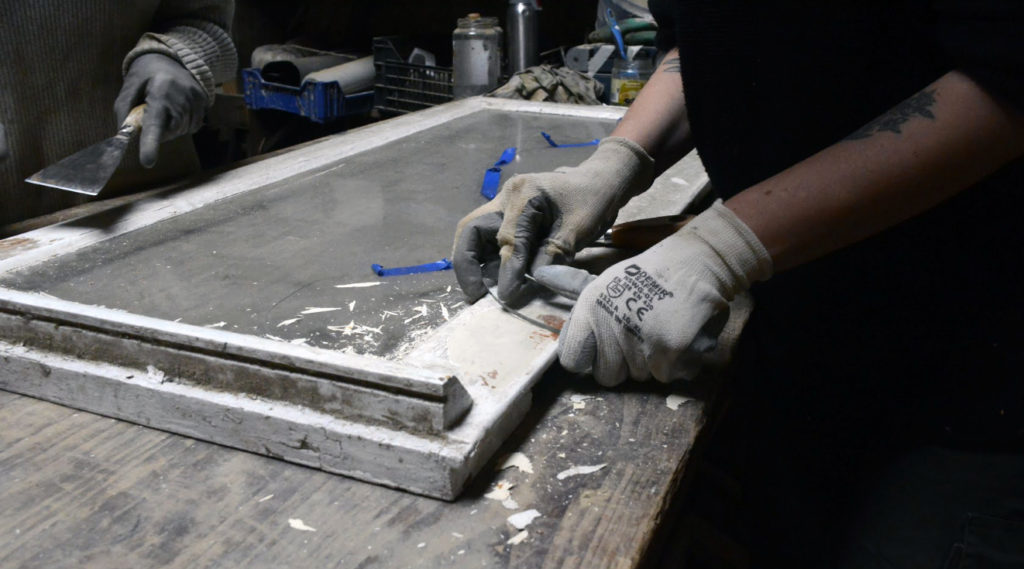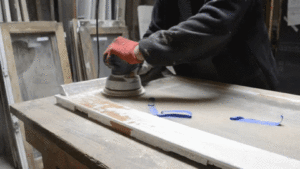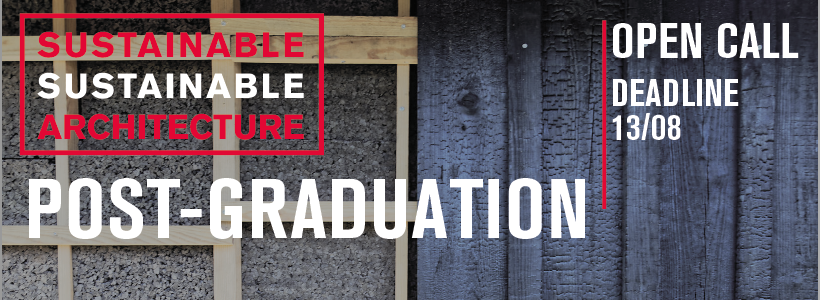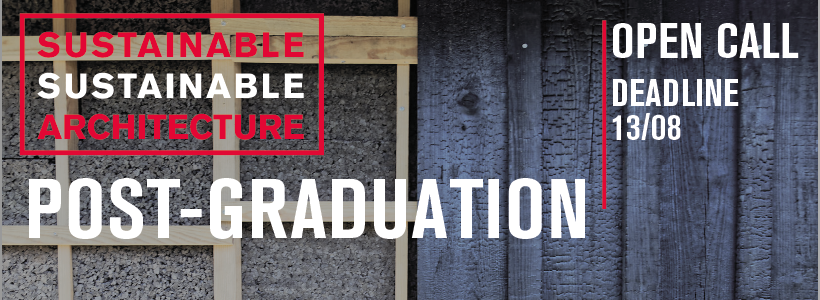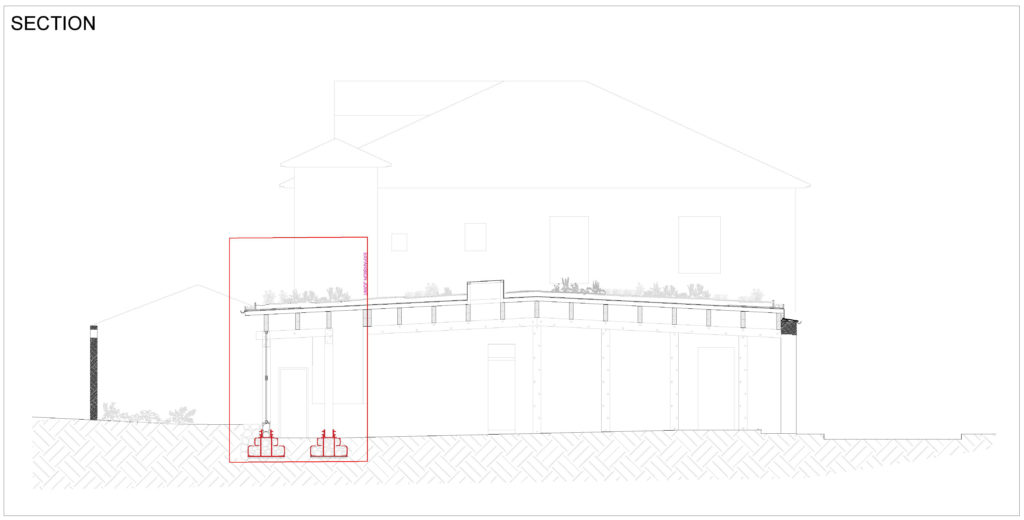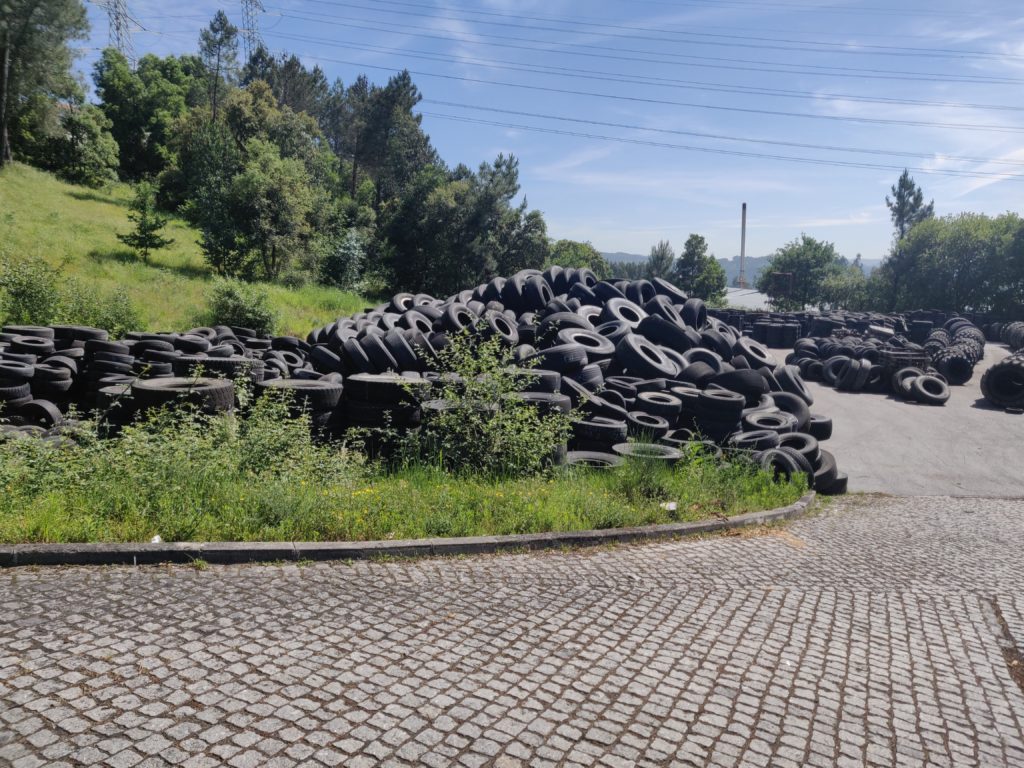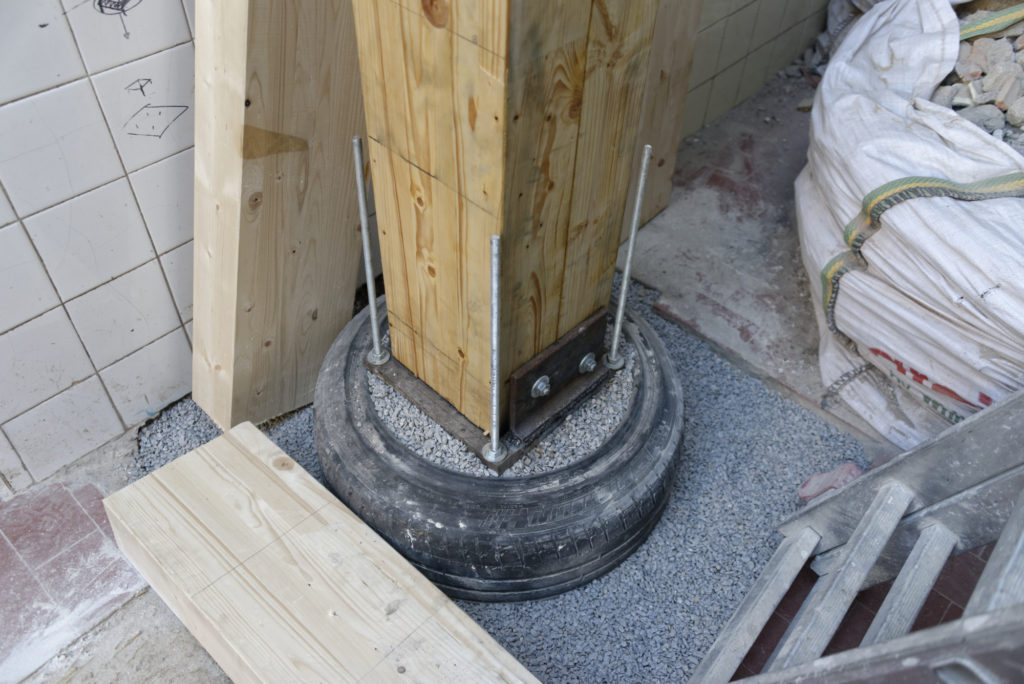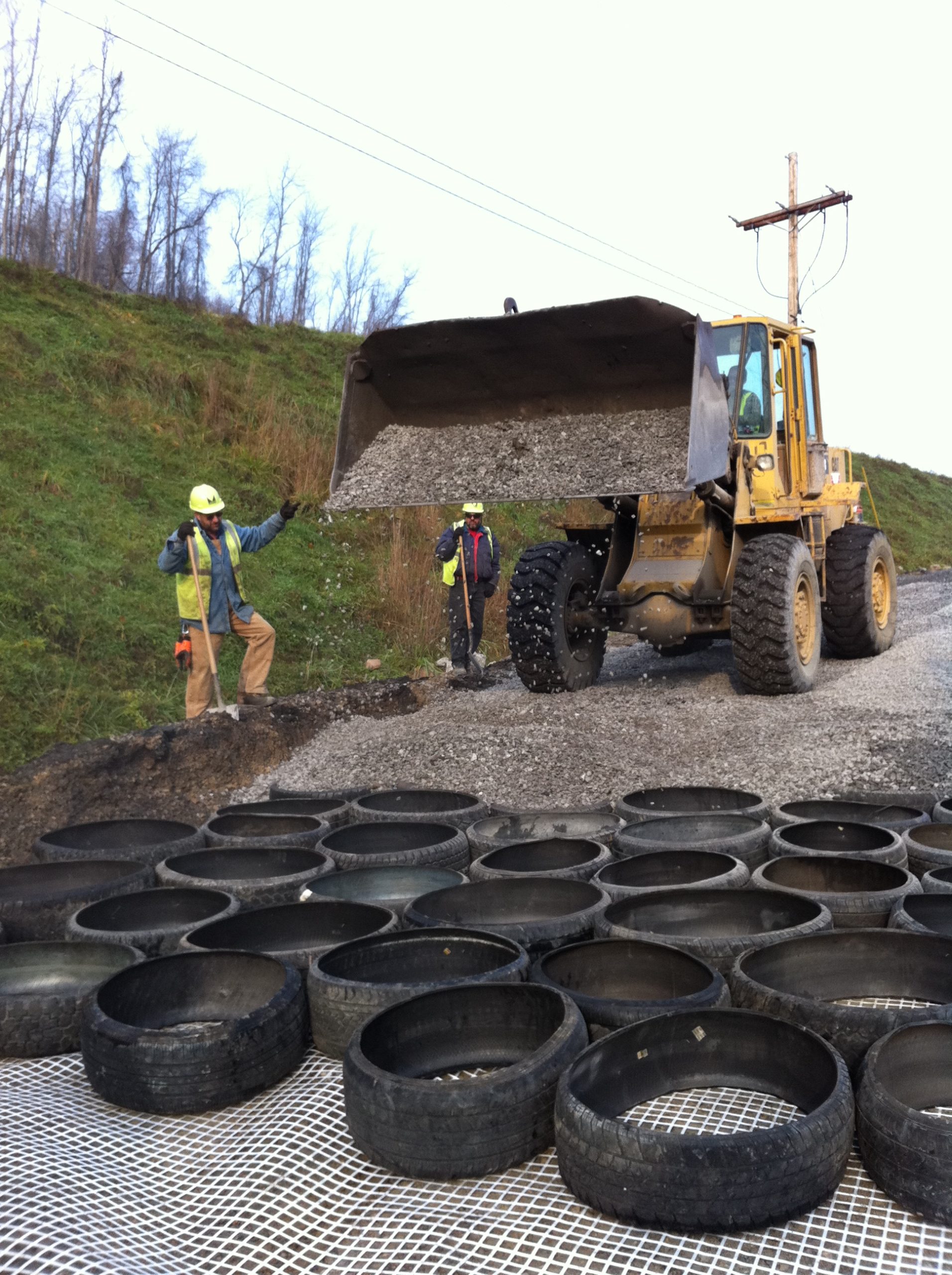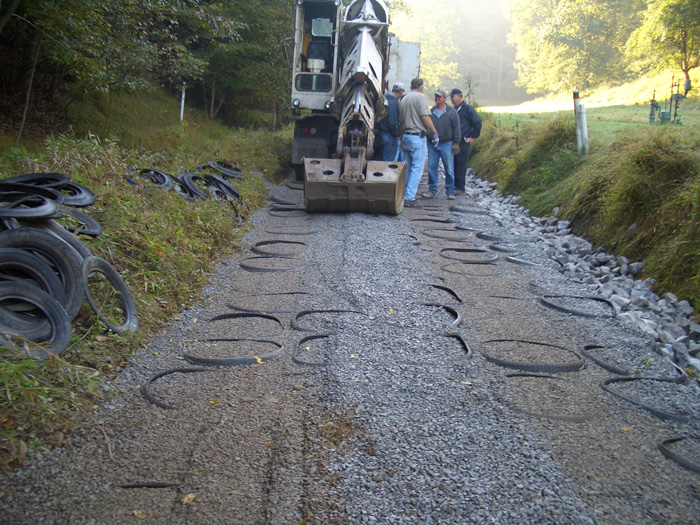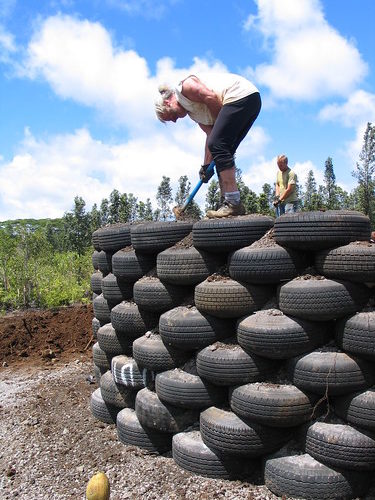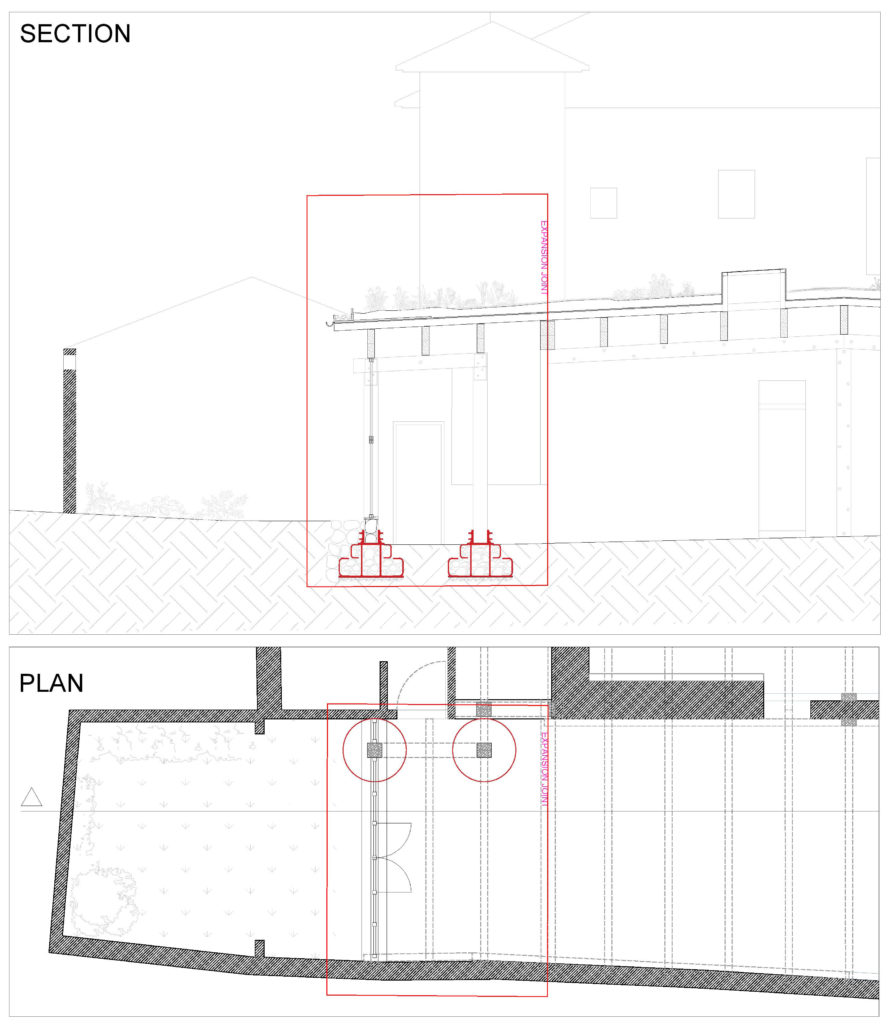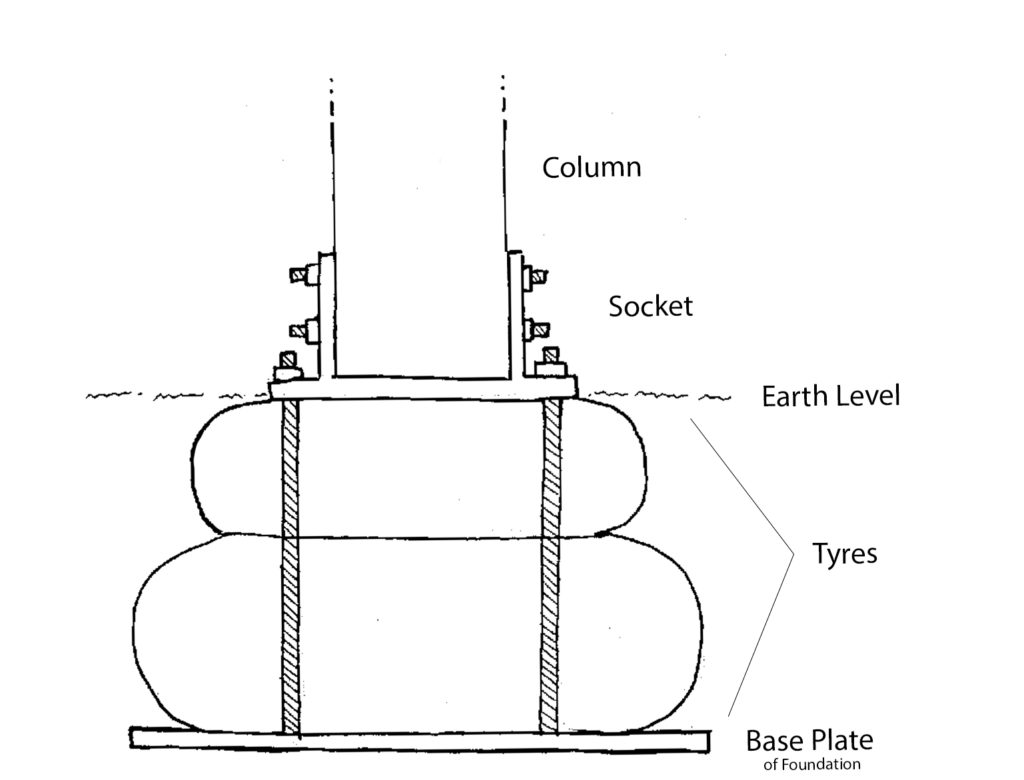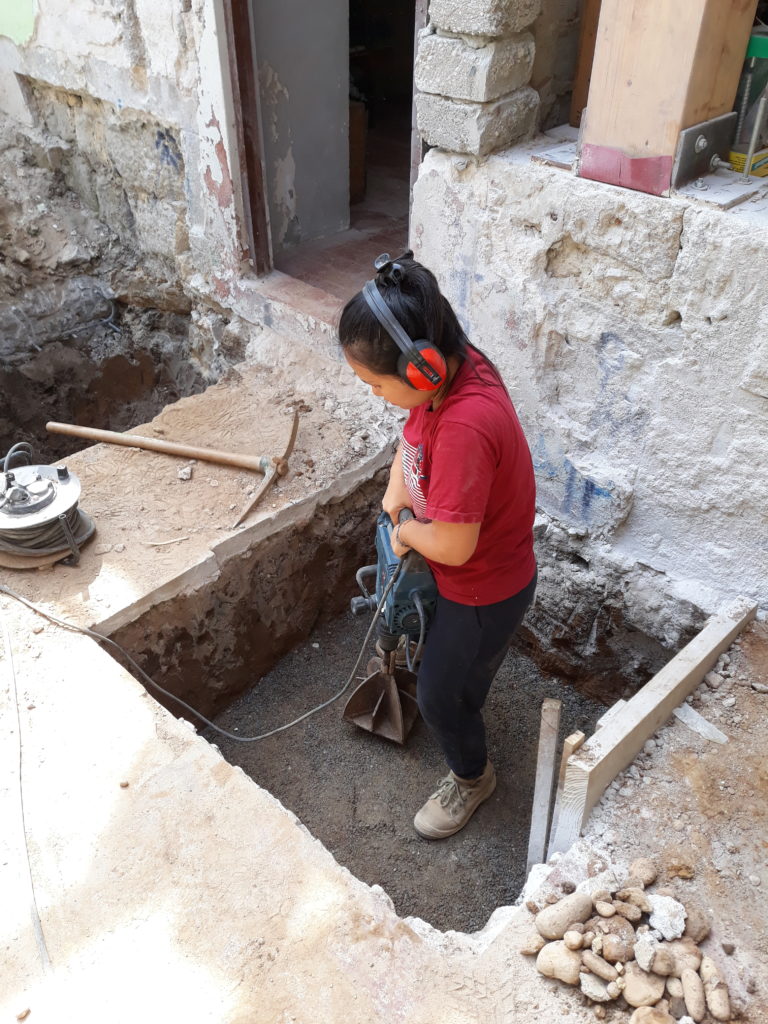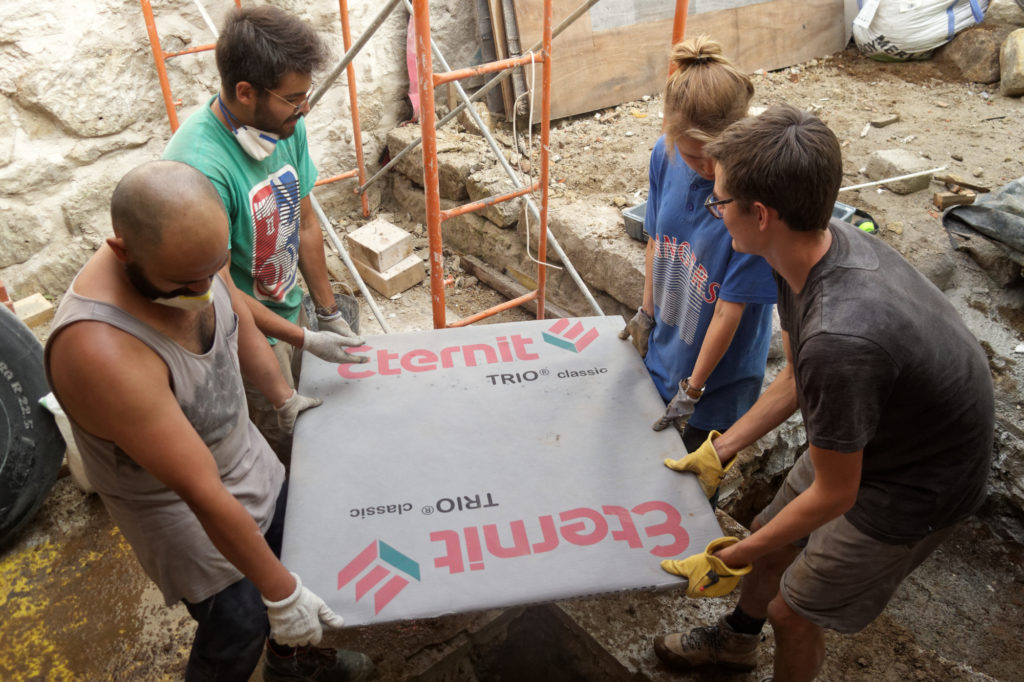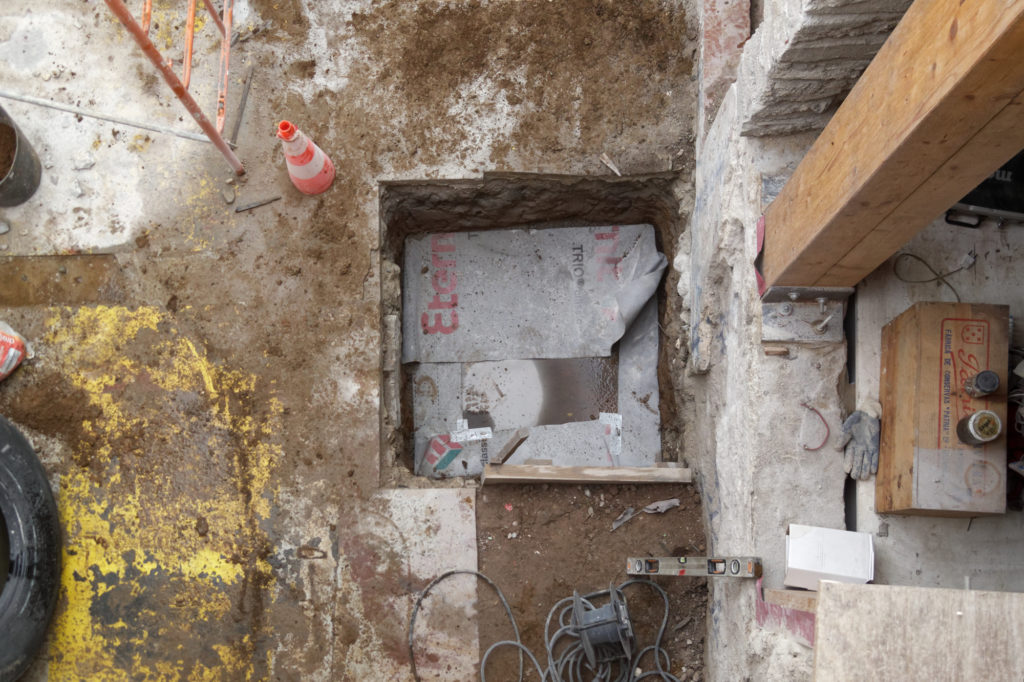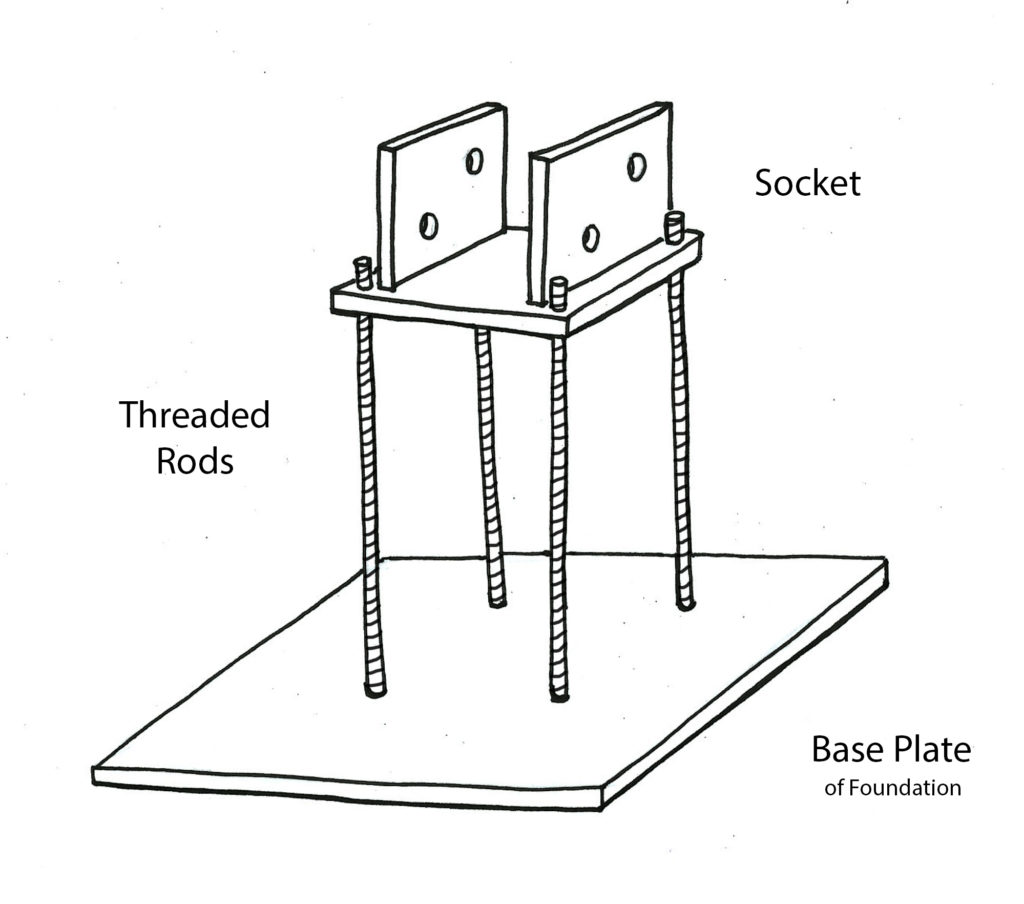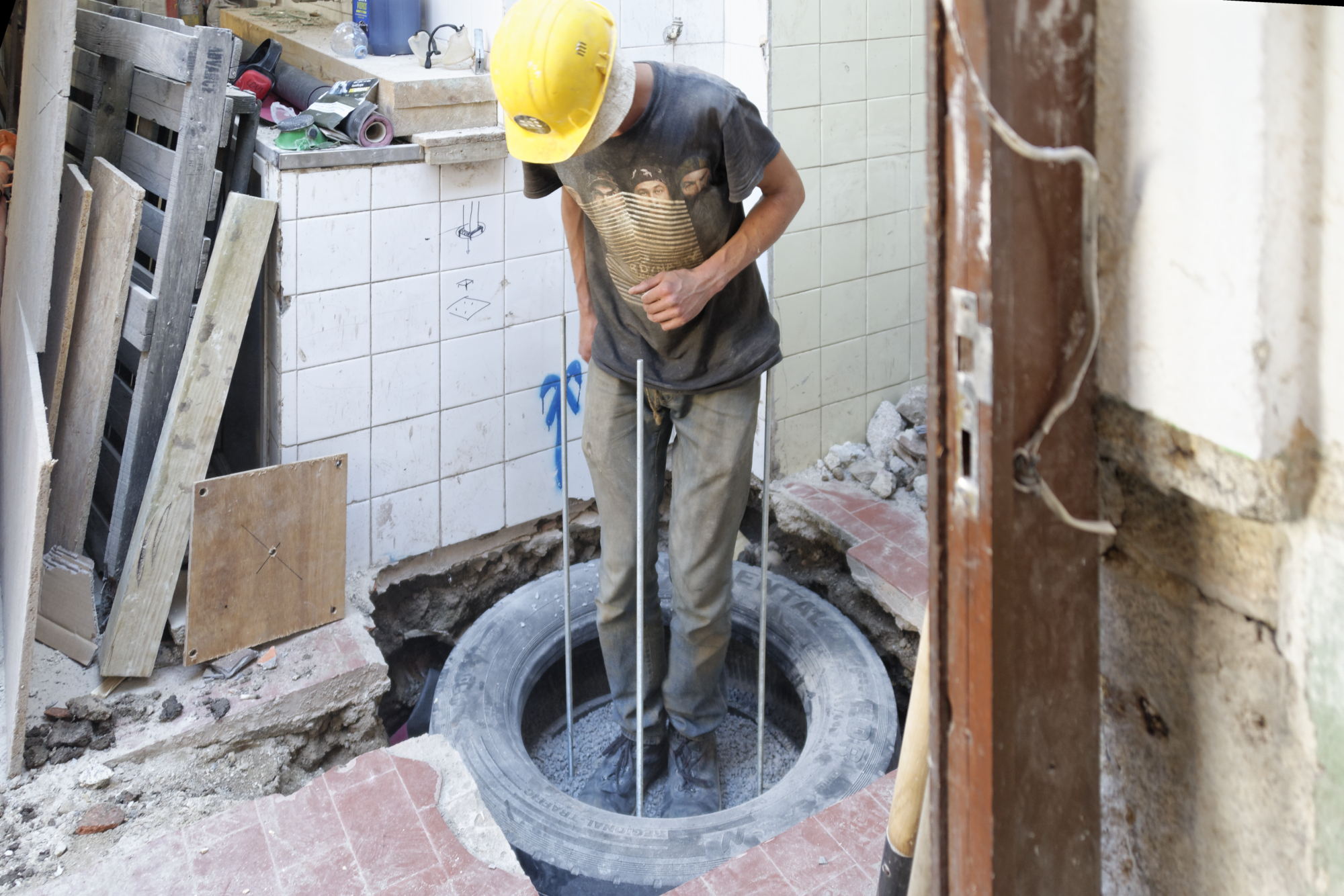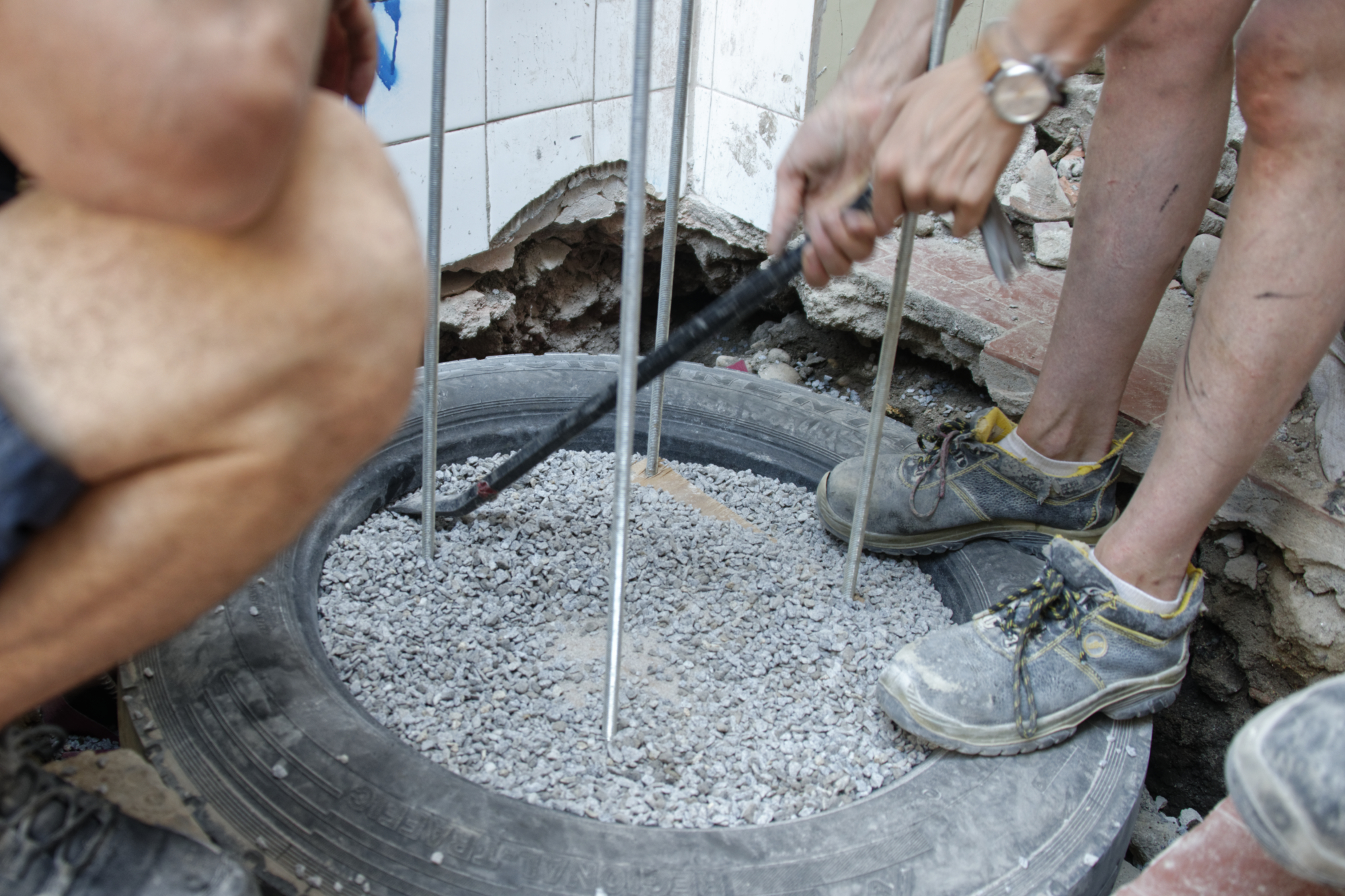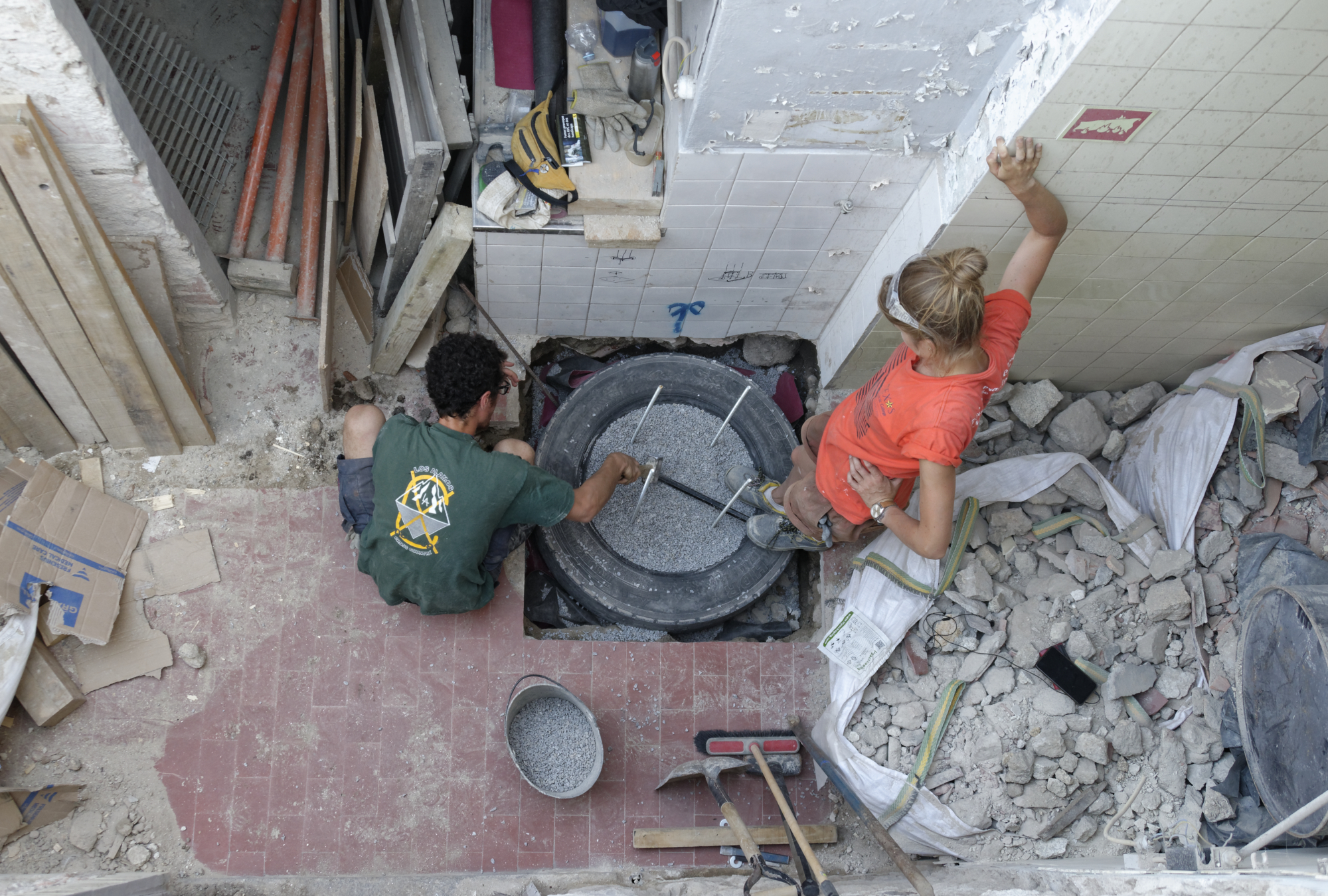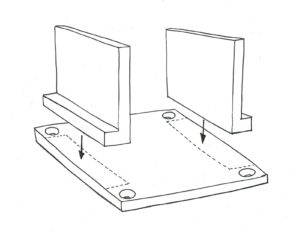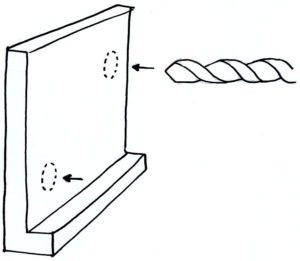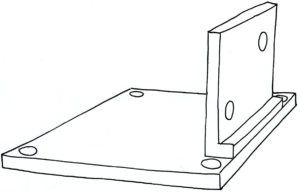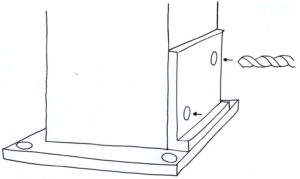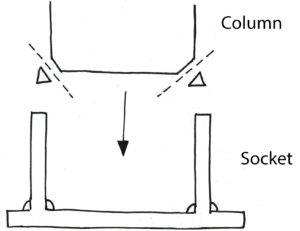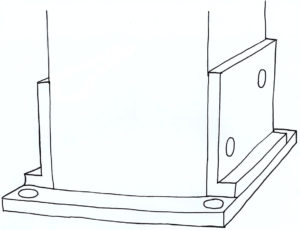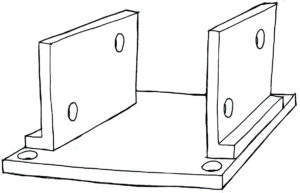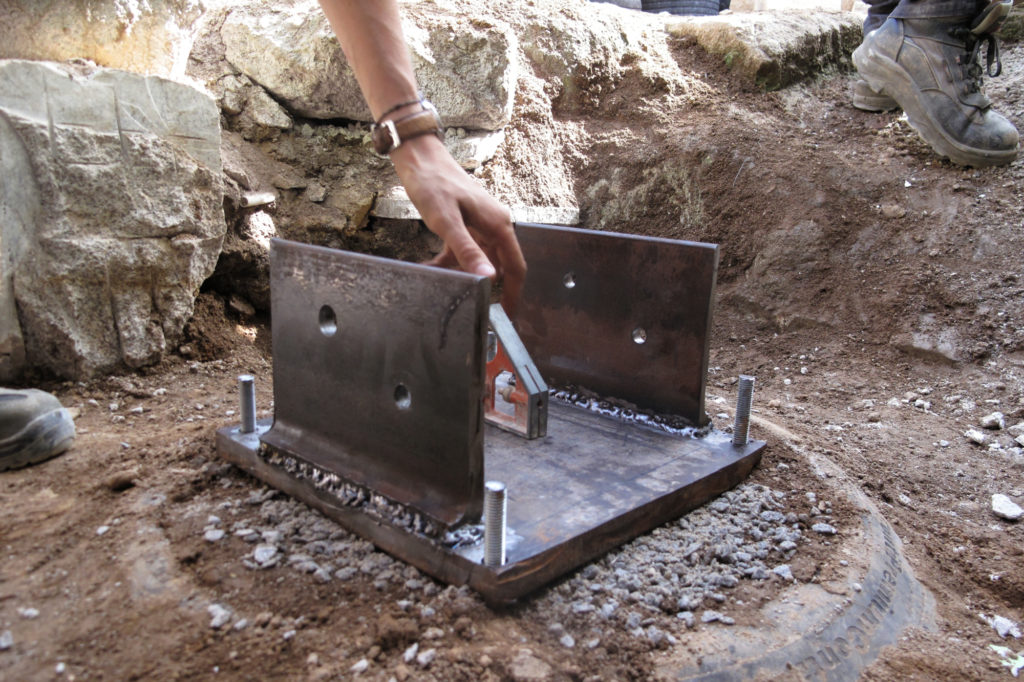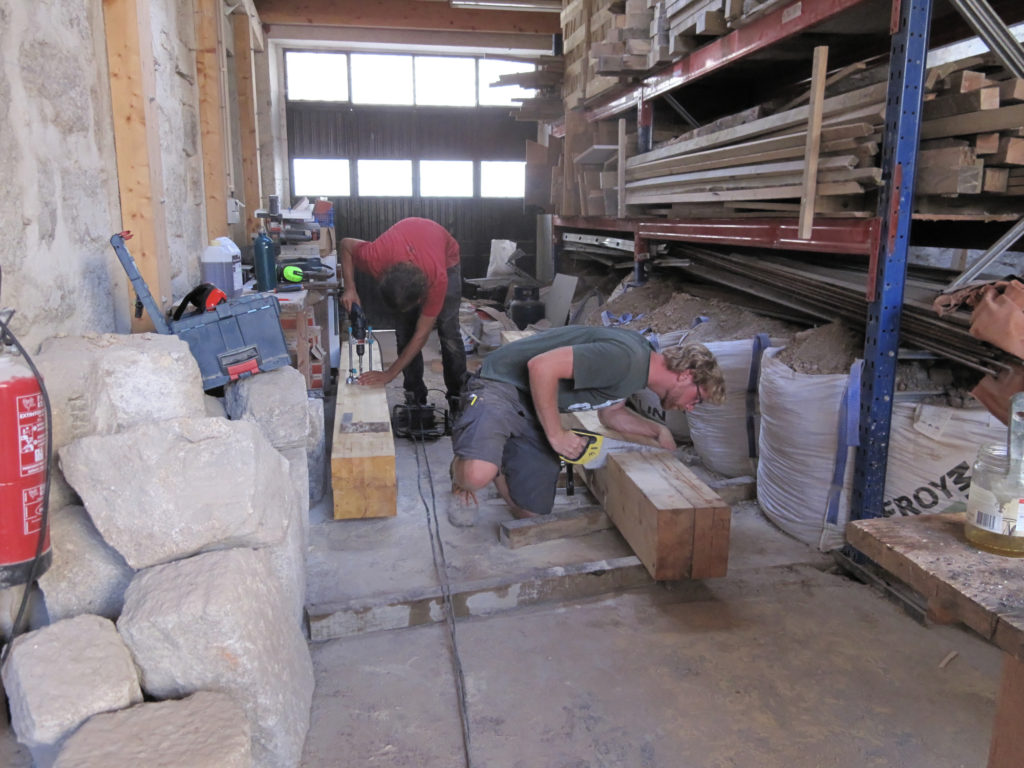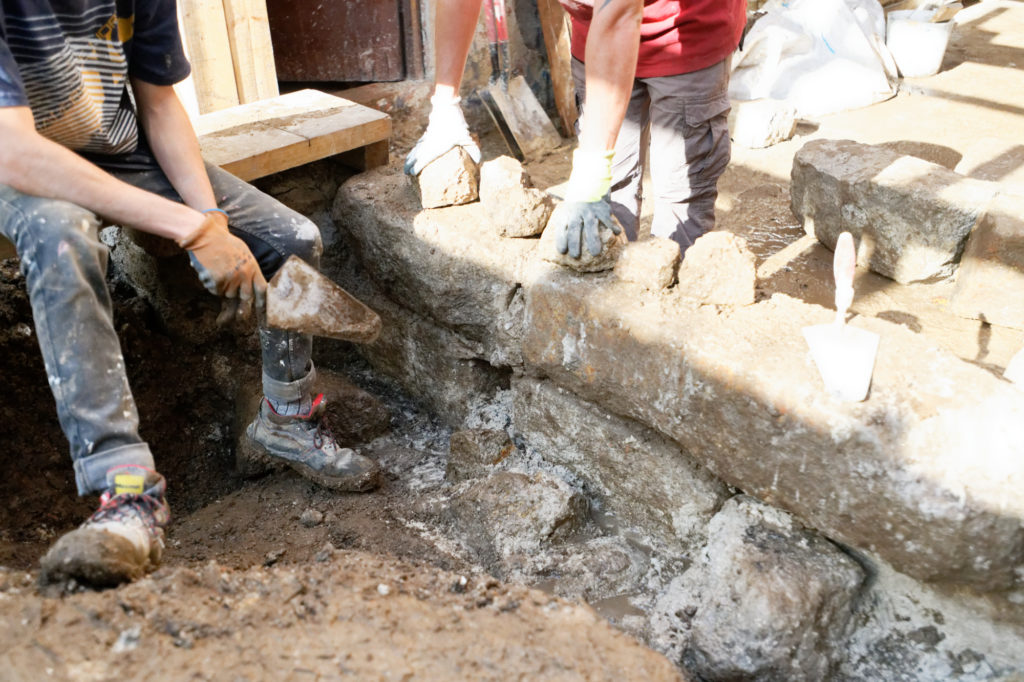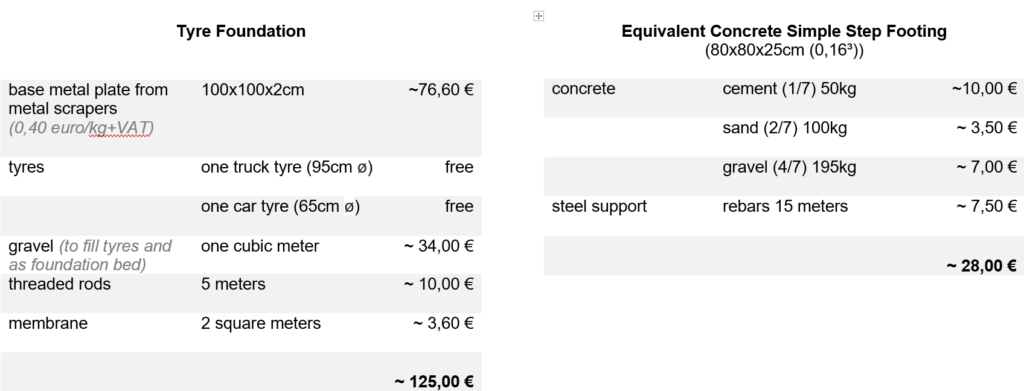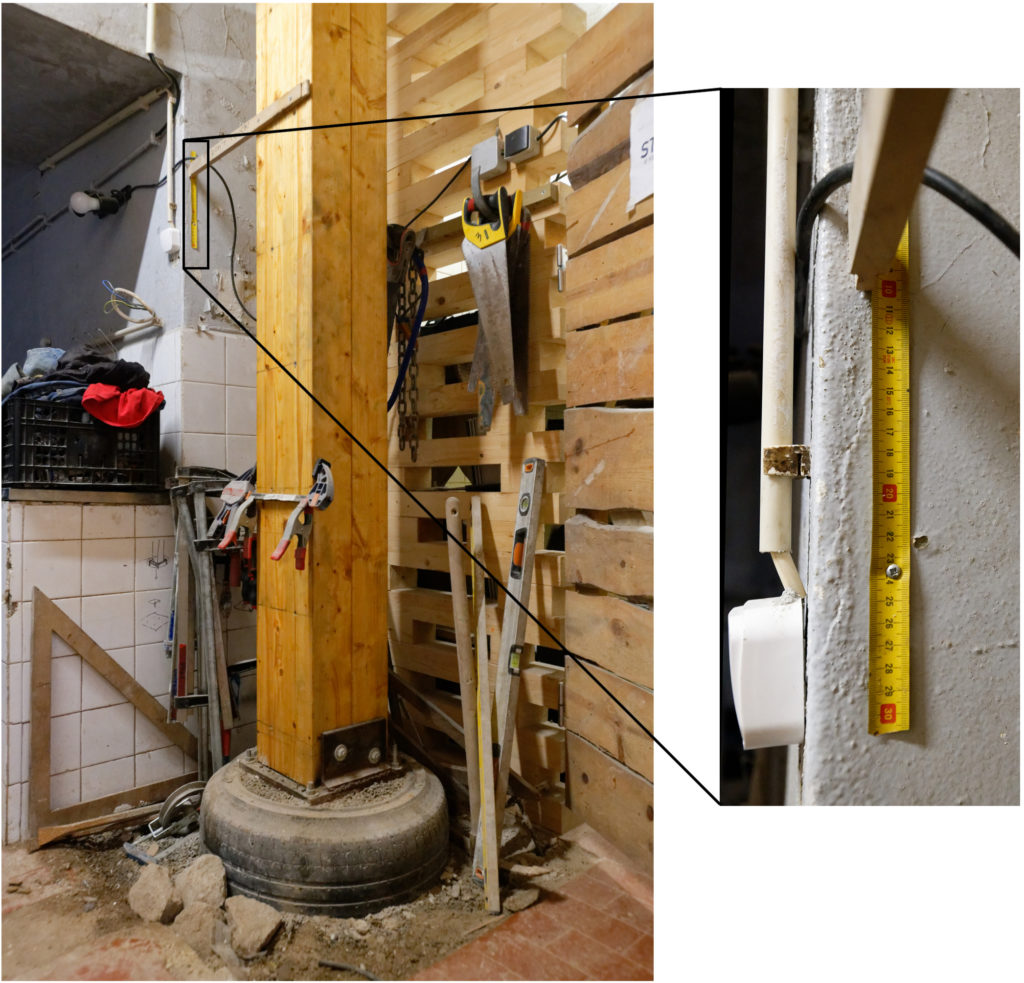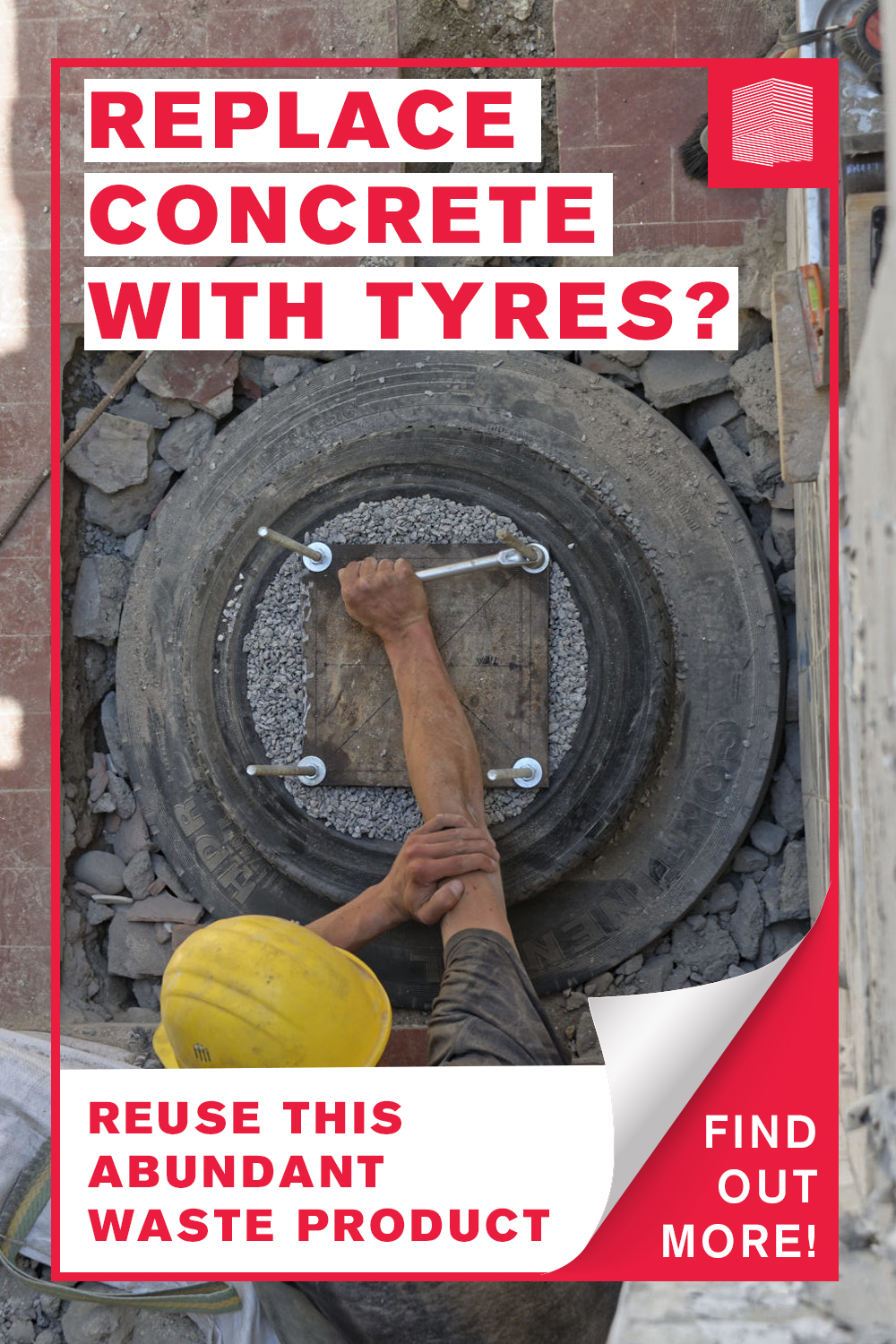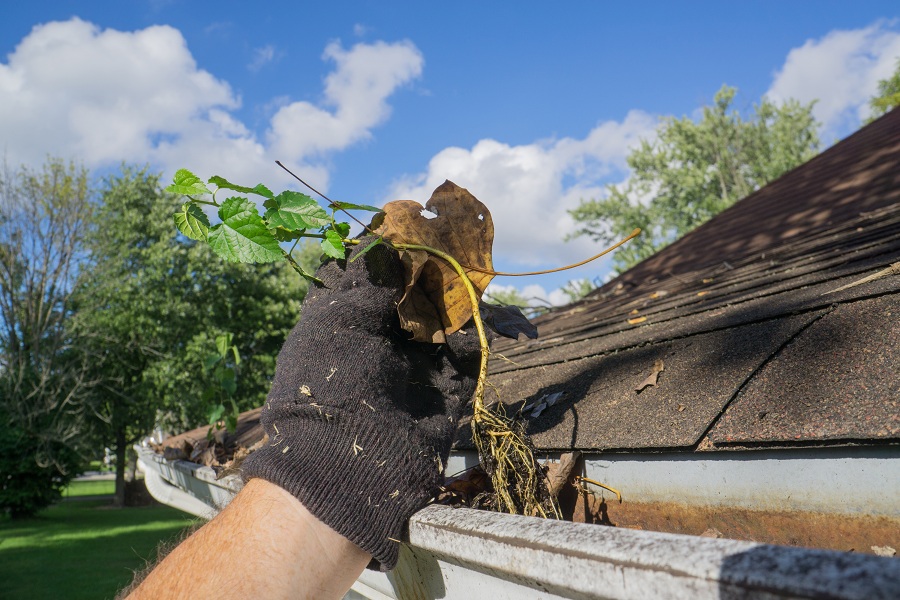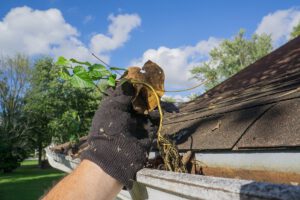Index
IntroductionOur researchWhy cellulose based insulation?Why lime instead of cement?Cardboard+lime insulationMaking and applyingConclusions and further steps
Introduction
In recent decades, we have seen many examples of individuals and collectives striving for a greener way of building: reviving traditional methods, favouring natural materials or including recycled elements in the process to limit the footprint. Critical Concrete embraced this aim from the beginning: in 2017, we started experimenting with cardboard based insulation, and since then we have been working with other materials (such as wool or mycelium) that can serve as valid alternatives to the more polluting conventional ones.
This article presents our journey and experience researching and developing prototypes for cardboard-lime based insulation. We will talk about why we decided to dig deep in lime and cellulose based materials, and what we learnt from our prototyping. Our research aims to deepen the recycled paper and cardboard potential as top sustainable insulation material.
Interested in using this technology in your project?
Critical Studio can help!
Learn More!
Our research
More expensive rents means more people having to live in precarious houses1. Housing poverty is one of the leading global issues2, affecting more and more people in the face of climate change. The lack of thermal comfort causes serious health issues, and is responsible for many preventable deaths especially among vulnerable and low-income communities.

In Portugal, where we are based:
Almost 20% of people claimed to be unable to keep their home adequately warm during winter.335.7% said their house is not comfortable during summer.4In 2018, at least 1 in 5 people lived in a dwelling with a leaking roof, damp walls, floors or foundation, or rotting window frames or floor.5
Our priority is to improve housing conditions through affordable and environmentally friendly solutions. This is the main reason our research lab has been focusing on insulation methods for many years.
We started experimenting with cardboard in 2017 due to the high performance of cellulose insulation. Our research began considering the advantages and handicaps of using corrugated cardboard as an insulation panel. So far, we produced boxes and panels for a low-tech insulation system and applied it in different summer school houses, in cases the insulation could not be applied on the exterior of the house (houses in line, no space in the street, etc.).
Last year, we decided to move forward in our research and try to find a method to continue producing cellulose based insulation but on a larger scale, since we wanted to continue developing an insulation that would be mineral-based and would not need to be covered by a plywood board or equivalent.
Why cellulose based insulation?
Cellulose is the organic compound mainly used to produce paper and cardboard, and other wide varieties of derivative products. It works as a very competitive insulation material, “depending on manu- facturing and method of installation and is comparable with other types of insulation. It has an average thermal conductivity being of about 0.040W/mK (similar to glass wool and rock wool insulations)”.6
Paper and cardboard are extensively used and abundant resource. Reusing and recycling cardboard locally7 also reduces emissions substantially:
In 2016, 50 660 000 tons of paper and cardboard wastage were produced in the European Union. Almost one million (905 137 tons) just in Portugal.8That year, within the EU, 72% of that waste was recycled. Whilst in Portugal the percentage was 55%.9
This means that we may take advantage of a material with high insulation performance and avoid it to become disposal waste at the same time, adding a new step in its life cycle.
There are many examples of people working with cellulose based materials, as the known papercrete, which since the ‘90s has been used in informal bio-constructions around the world. Papercrete is the building material made of paper pulp and cement. The main advantage of it is “that it is lightweight but sturdy enough to bear loads10. But we didn’t want to use cement.
Why lime instead of cement?
Cement became especially relevant during the industrial revolution and it has changed our way of building from that moment. Nowadays, as an affordable and easily accessible material, cement might seem like the perfect solution to achieve efficient results quickly. However, the environmental impacts of the material are very concerning.
The most well known fact is the excessive CO2 emission of the cement industry, as it occupies 3rd place of global CO2 emissions11. But even if emissions dropped gradually with innovation efforts to create the green concrete12, we are not sure if the industry will ever be fully sustainable and carbon-neutral.
Why? Because the environmental harm does not stop with CO2 emission. We have to keep in mind:
other additives in the material’s production,excessive water usage (both during cement production and construction with concrete), centralized production, lack of perspirability of cement forces the combination with other unbreathable, synthetic materials.complexity/impossibility of recycling concrete, often reinforced, combined with lightweight materials, or in complexe composite materials,that concrete surfaces trap heat and prevent rainwater absorption,
That makes cement the ultimate enemy in sustainable architecture. It is time to opt for alternatives. To reduce our environmental impact, we put our votes to use lime: in contrast to cement, lime is biodegradable and fully-recyclable (even on bricks), and most of the time, locally produced.
A more detailed article on cement will be published in the upcoming weeks, stay tuned!
Cardboard+lime insulation
Key concepts
Cardboard pulp: Cardboard soaked in water for at least 12 hours, and then squeezed and mixed with an electric mixerCardboard+lime paste: The whole mix we used for our prototypes. Its composition changed over time as described below.Quicklime: Calcium Oxide. CaO. The outcome of heating limestone. Slaked lime: Hydrated lime. Ca(OH)2. It is the paste result of putting enough water so that the quicklime combines chemically with it.Natural hydraulic lime: Ca(OH)2+reactives. It is used to make mortar which sets through hydration.
Since this last year, we have been working on what we call cardboard+lime, based on papercrete in which we swapped cement with lime. Our goal of producing insulation allows us to use a non-structural, but less harmful material. In the first experiment, we mixed lime and cardboard14 in a small brick shape which looked very promising in terms of resistance. We were really curious about what we could get from there.

The first question that appeared was which shape should we give to these prototypes: Should we continue with bricks? Should we try with panels? In our previous research, the amount of time that producing panels takes was one of the biggest handicaps, so we decided to look for a way to remove this step from the process. We opted for making shuttering molds and applying a cardboard+lime paste in situ.
First prototypes
We have made many prototypes, have learnt different new things from each one and have tried to improve in each new attempt. The second cardboard+lime paste was made from recycled cardboard that we got from Lipor, water, sand and natural hydraulic lime (NHL) and was applied in a temporary wooden formwork of 1 m2 and 8 cm of thickness.

Recipe and setting process
We started with a basic mix made of (proportion in volume):
Cardboard15 pulp70%Sand 20%NHL 5 1610%
That first trial gave us an overview about the outcome we wanted to have and what was missing. In the following prototypes, we added borax for added resistance to fungi and mould. We also increased the proportion of hydraulic lime, reducing the sand; this made the mix easier to mix and apply. We got a better consistency in the cardboard+lime paste and we could notice it during the curing: the prototype was more compact and homogeneous.



Over time, we saw a small shrinkage up to 2% of their sizes and the terrible appearance of mould on the second and third prototypes. The cardboard+lime paste shrinks because of the amount of cardboard pulp –it tends to shrink when it loses its water– in the final mix; and the mould appears because of the slow setting process.
How did we try to solve this?
Adding slaked lime in order to kill any kind of life that wanted to appear.Adding plaster to accelerate the curing process.Reducing the percentage of cardboard pulp.
Thus, our final cardboard+lime recipe got its shape (proportion in volume):
Cardboard pulp62%Sand15.5%NHL 515.5%Slaked lime2.3%Plaster2.3%Borax2.3%
Shuttering and structure
In the beginning, the shuttering was thought of as a temporary structure –such as those we can see for making concrete– compound of vertical wooden pillars and boards. After the first prototype, we realised this was not feasible if we wanted the cardboard+lime to be a solid and permanent insulation attached to the wall.

In order to achieve a safe insulation that could last for years in place, we designed an internal structure secured to the vertical one and the wall in such a way that only the boards were removable. At the end, we decided to also add interior beams to completely ensure the cardboard+lime insulation.
Making and applying cardboard+lime
As the recipe and the structure evolved over time, so did the production process.. With the addition of new structural elements, such as the inner string and beams, the procedure became more complex.
We had to follow a step by step process in which the use of one tool or another could save us a lot of time, as well as the outcome could change completely if it was not followed properly. Furthermore, the setting process could be slashed depending on the context: are we working during Summer? Are we working in a humid zone? Do we have enough ventilation? And with it, the properties of the insulation.
How to make the cardboard+lime insulation
Disclaimer: Calculation for 1 m2 insulation. First, measure the whole wall you want to insulate and divide it in the best way it can fit. Also, if you are making the insulation in a stone/concrete wall, mark and make all the holes you will need.
Cardboard+lime paste – with the proportion referred before
For making the cardboard+lime paste we need to first prepare the cardboard pulp and the slaked lime (you can buy ready-made lime putty, but we used to make it ourselves).
Slaked lime
This is a dangerous chemical reaction, so we advise to use goggles, mask and gloves.

In a large metal container –nothing plastic though, as the heat generated by the reaction will melt it–, add one part quicklime to three parts water.Always add quicklime to water, and never water to quicklime, as it will spit, and can be very dangerous.The reaction should start and it can achieve temperatures over 100ºC.Wait until cooled down. Usually we prepared the mix at least one day in advance.
Cardboard pulp
For 1 m2 of cardboard+lime insulation, 6 cm thicker, you will need 65 l of cardboard pulp.

Tear/shred the cardboard into 4-5 cm pieces and drop them into a bucket until almost full.Pour enough water into the bucket to soak the cardboard pieces.Let the paper soak for at least 12h (and no more than 48).Attach the mixer to the drill and move it around in the cardboard to shred it to a pulp.Squeeze and reserve.
After having these two ingredients ready, we can start the mix!
In a concrete mixer, put half of the cardboard pulp, the hydraulic lime, the sand, plaster, borax and the slaked lime.Start the machine and add the rest of the cardboard pulp little by little to get a better mix.If you see the mix becoming small balls, stop and tear them apart. Mix again until having an homogenous mix.
Applying the cardboard+lime paste
For the shuttering we use 6×6 cm wooden bars and 100×33 cm plywood boards.

Make the frame where the shuttering will be placed. Mark where the structure is going to be placed. Place a bar horizontally on the floor (a), attach it to the wall with screws. Place two bars vertically (b) with 1 m separation between them. Measure from the axis of each bar. Attach them to the wall with screws.Put four screws (c) drawing a ‘z’, two of them on the vertical bars with ~20 cm distance and the other two on the wall at the same high. Tie a string (d) ]to the first screw – the one closer to the horizontal beam on the floor–.Stretch the string to the next screw –the one at the same high that the one before–. Don’t tie the string because we will need to tight it later.

Screw the wooden board to the pillars.Start pouring the cardboard+lime paste until it covers the string. Press the paste.Tight the string.Pour more cardboard+lime paste.Stretch the string to the third screw, in diagonal.Pour more paste. Press it. – The more you press, the better.Tight the string, stretch it to the last screw on the pillar. Put a beam with nails (e) small beam]. Press.Repeat from point 2.
Setting process
Remove the boards after 3 days. There is no risk of downfall, but the cardboard+lime paste is still wet so be careful not to beat it. The setting process can last for many weeks until the insulation is completely dry, but with the proper conditions it should be around 3 weeks. During these three weeks the insulated room must be well ventilated – cross ventilation is always the best- to avoid the condensation and with it, the slowed down of the curing process.
Conclusions and further steps
After almost one year of researching and observing the behaviour of the different prototypes, it seems fair to say that cardboard+lime, with the recipe shown above, is indeed proven to be a promising insulation material.
But we ended on a process that is a bit crazy. We realized that applying cardboard+lime as we did needs specific conditions and a meticulous procedure. So, yes, for experienced building people cardboard+lime in this shape may work as an eco-friendly low-tech material. Nevertheless, our aim is to give to our society a environmentally friendly insulation material accessible for all.



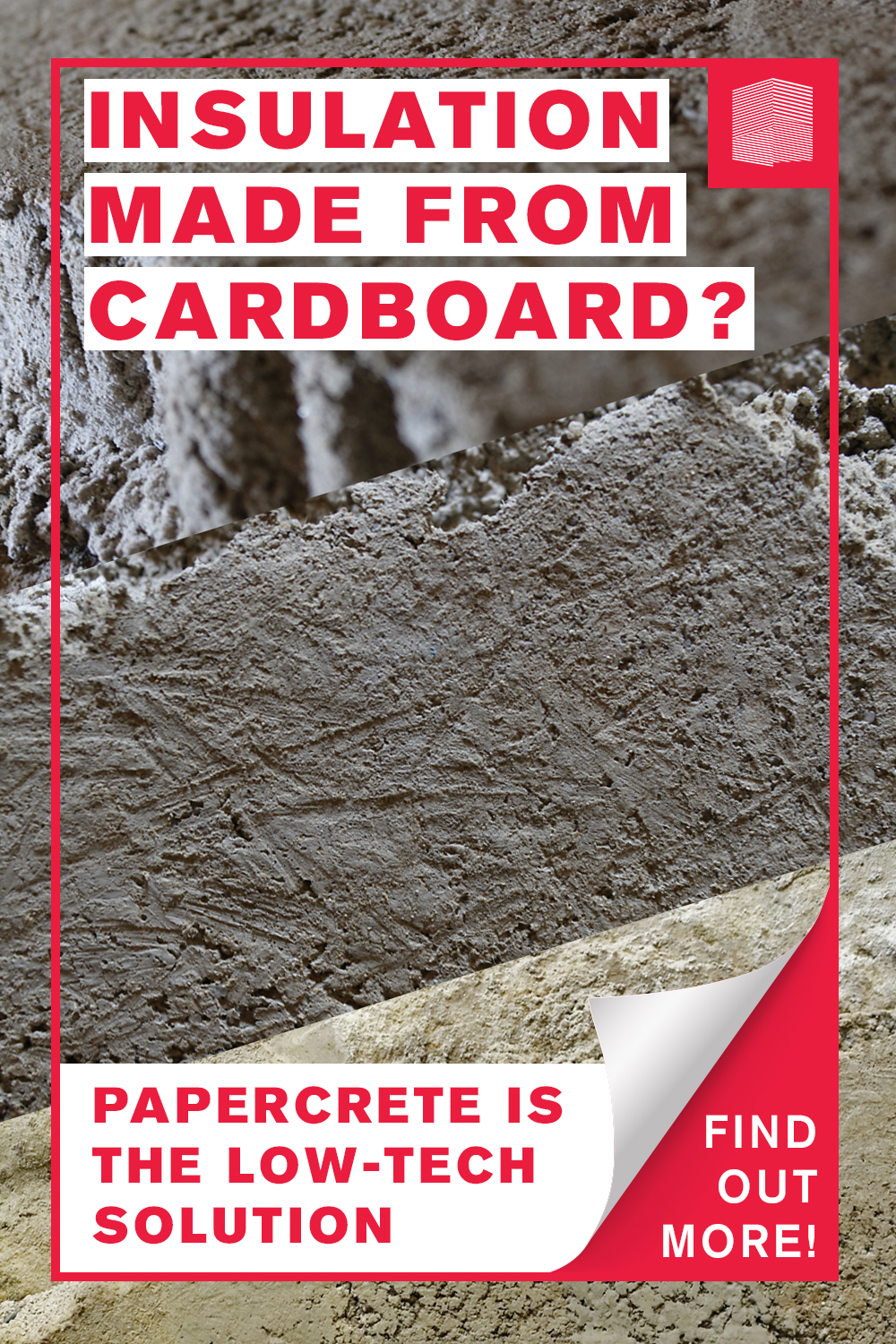
Thus, now that we know that the material works, we are working to improve its shape. In our last prototypes, we decided to re-think the brick shape and made two blocks of 36x23x7.5 cm and one of 40.5x.17.5×3 cm. The outcome looks auspicious: easier process of making, less time to dry and highly resistance after the curing process.
The next steps include coming back to the panels with a hydraulic press that may allow a faster curing process and more consistent and resistant material. We keep working in this direction to maximize the potential of this insulation.
Notes and references
1 Marques Costa, R. (2019) Crise na habitação empurra mais pessoas para casas sem condições mínimas. Publico (PT) – https://www.publico.pt/2019/05/25/sociedade/noticia/ha-viva-condicoes-precarias-sao-realidades-escondidas-1873884
2 Habitat for Humanity (year) 7 things you should know about poverty and housing. https://www.habitat.org/stories/7-things-you-should-know-about-poverty-and-housing
3 Eurostat (2019), Inability to keep home adequately warm – EU-SILC survey. https://ec.europa.eu/eurostat/web/products-datasets/-/ilc_mdes01
4 Eurostat (2012), Share of population living in a dwelling not comfortably cool during summer time. https://ec.europa.eu/eurostat/web/products-datasets/-/ilc_hcmp03
5 Eurostat (2018), Total population living in a dwelling with a leaking roof, damp walls, floors or foundation, or rot in window frames or floor – EU-SILC survey. https://ec.europa.eu/eurostat/web/products-datasets/-/ilc_mdho01
6 C.-M. Popescu, D. Jones (2017) Cellulose, pulp and paper. Jones, D. Brischke, C. (Eds.) Performance of Bio-based Building Materials. [pp.75] https://doi.org/10.1016/C2015-0-04364-7
7 China Impacts Price of Recyclable Cardboard. https://www.phswastekit.co.uk/blog/posts/10-07-2019/-china-impacts-price-of-recyclable-cardboard
8 Eurostat (2016), Generation of waste by waste category, hazardousness and NACE Rev.. https://ec.europa.eu/eurostat/web/products-datasets/-/env_wasgen
9 Eurostat (2016), Treatment of waste by waste category, hazardousness and waste management operations. https://ec.europa.eu/eurostat/web/products-datasets/-/env_wastrt
10 Nubie, S. (2019) How to make papercrete: the ultimate building material for off grid living. Homestead Survival Site. https://homesteadsurvivalsite.com/how-to-make-papercrete/
11 Andrew, R (2019), Global CO2 emissions from cement production, 1928-2018, Center for International Climate Research. https://doi.org/10.5194/essd-11-1675-2019
12 IEA (2019), Tracking Industry, IEA, Paris. https://www.iea.org/reports/tracking-industry/cement
13 Recycled cardboard provided by Lipor – local trash collector company.
14 Over time, we realised that cardboard sweats the ink printed on it, so then we tried to avoid printed parts as much as possible.
15 Natural Hydraulic Lime NHL 5 NP EN 459-1.
The post Out of the box – Vol. 3 first appeared on Critical Concrete.
